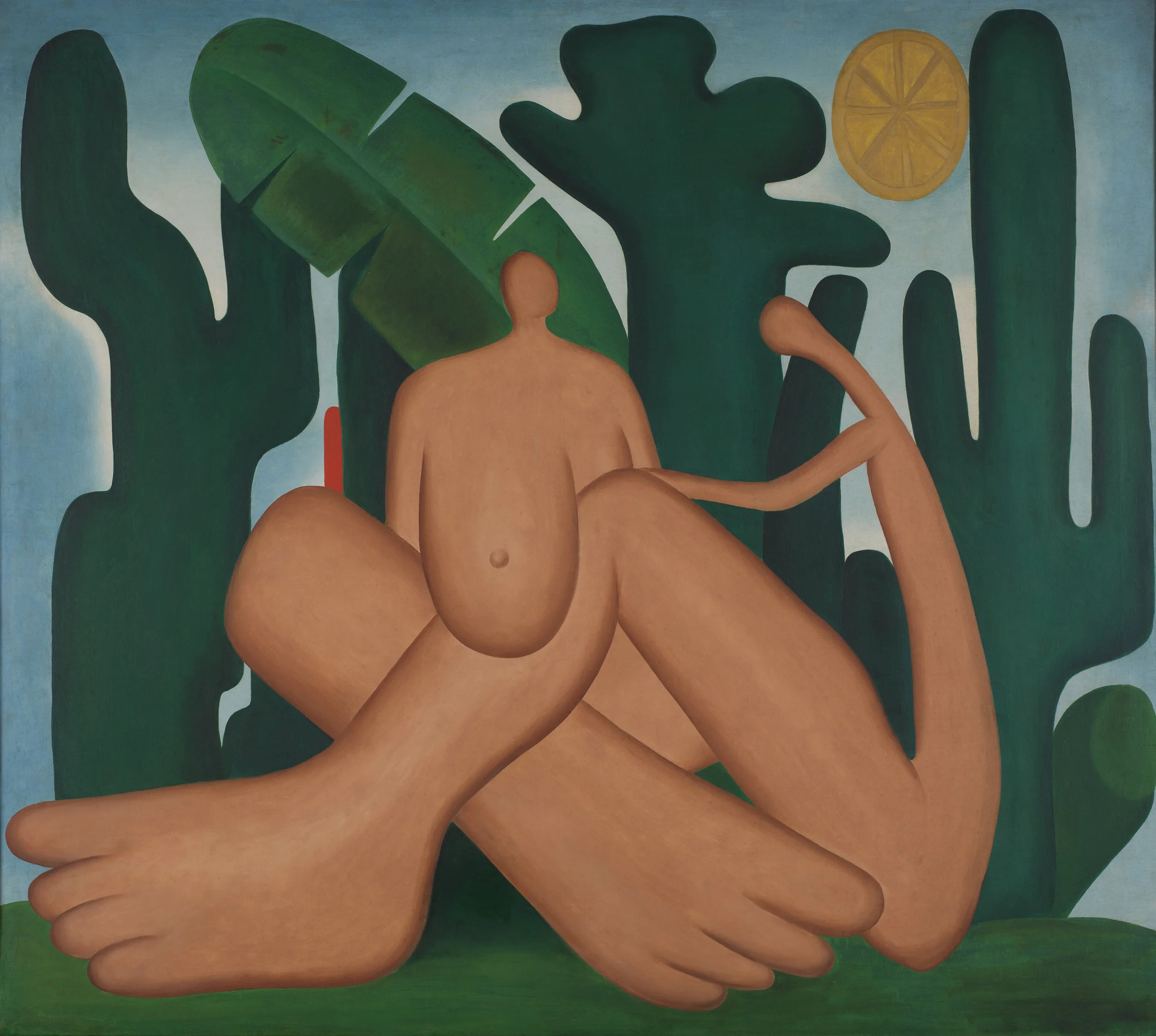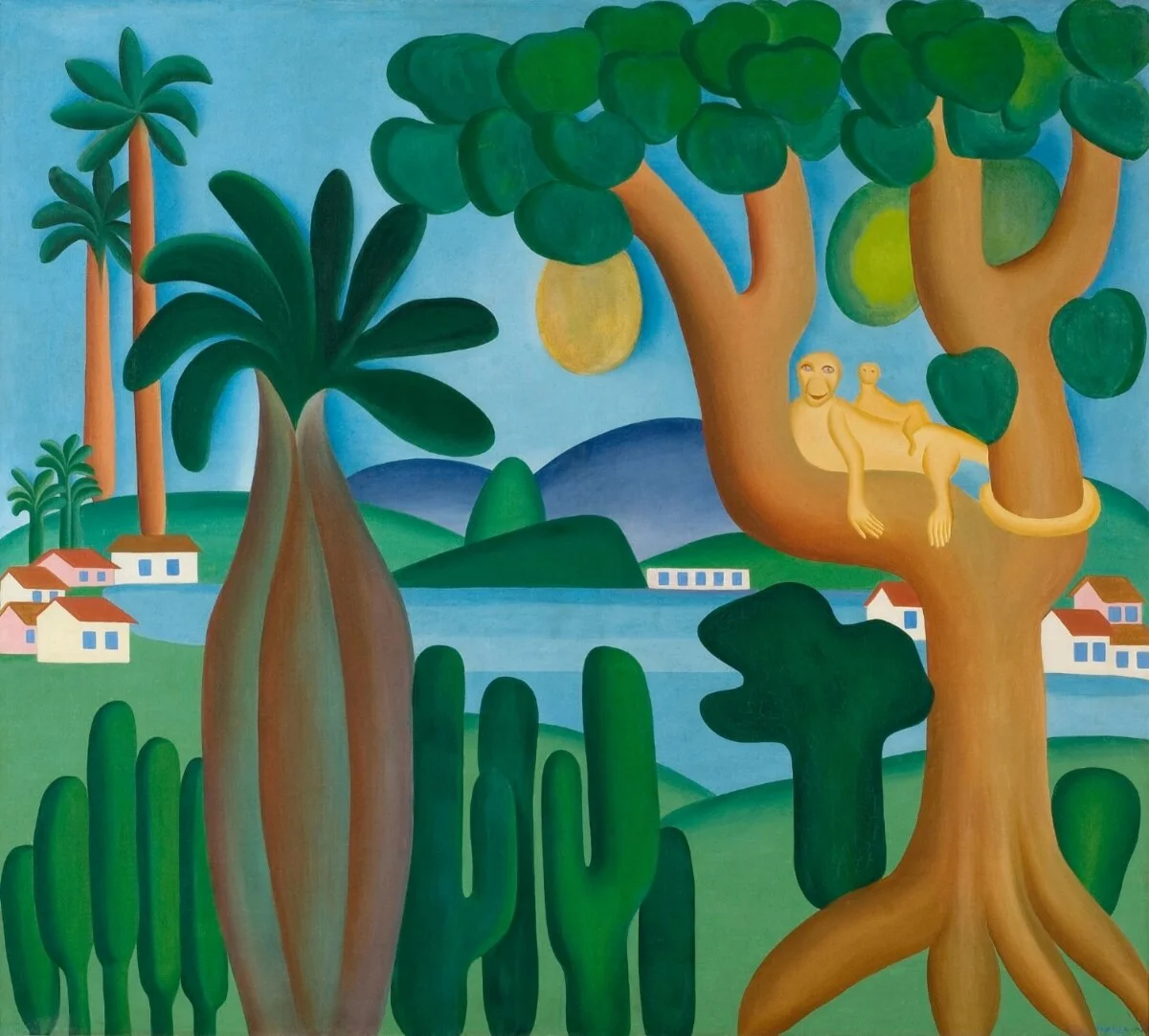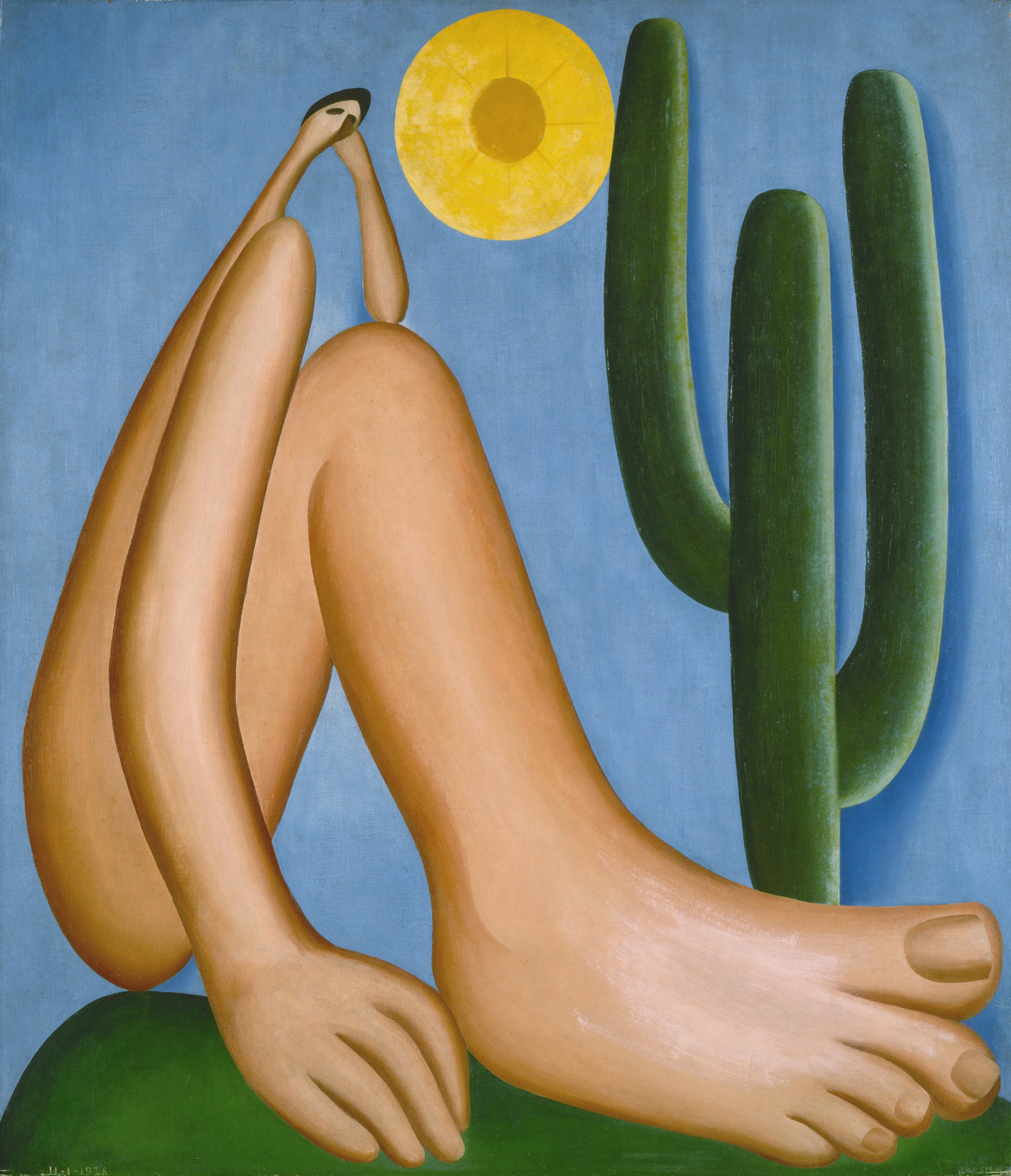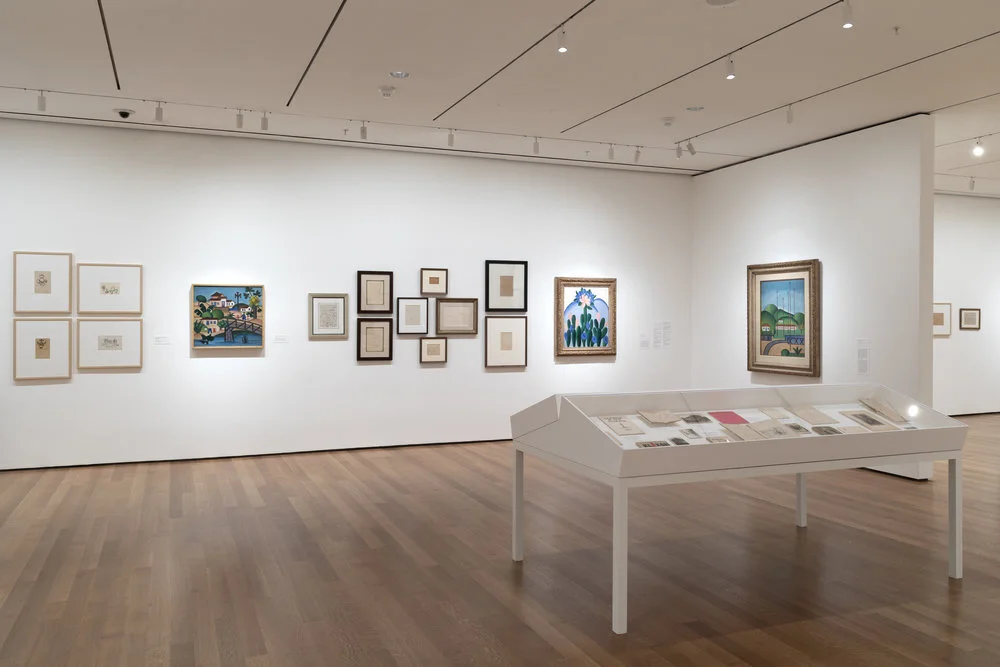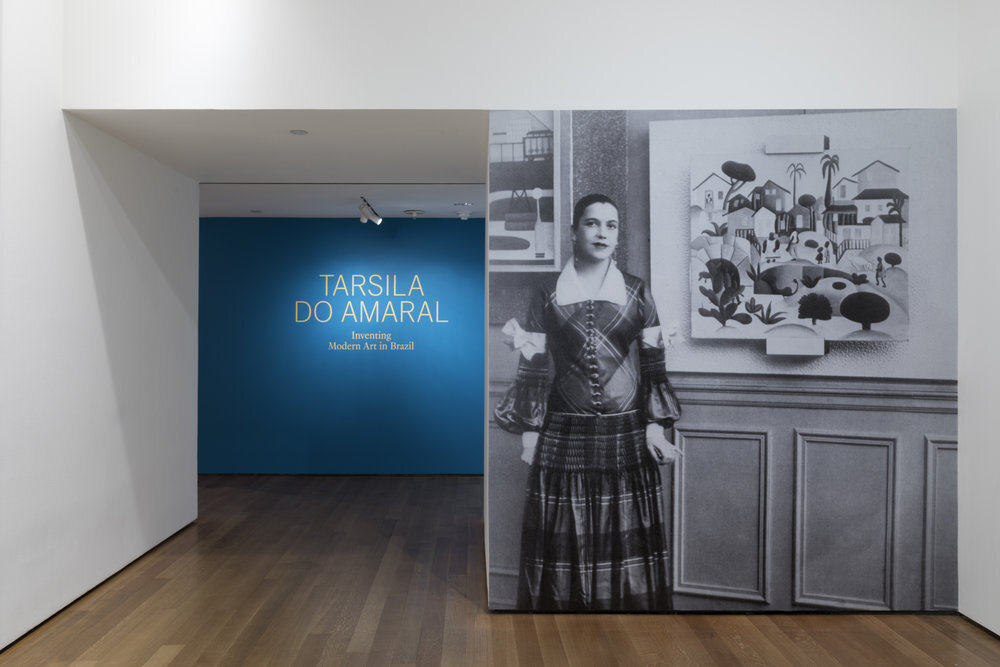TARSILA DO AMARAL: INVENTING MODERN ART IN BRAZIL
There has recently been an upsurge in interest in Brazilian avant-garde - from Lygia Clark’s hinged metal sculptures at the MoMA to Hélio Oiticica’s walk-in sand installations at the Whitney. This is important in taking steps away from the stereotypical image of Brazil perpetuated by such figures as Carmen Miranda - the ‘Lady in the Tutti Frutti Hat’ - as an exotic, sexualised object of desire, a spectacle to be enjoyed. Another important element in this transition of perception is Tarsila do Amaral’s first solo exhibit in the US, on view at the Museum of Modern Art through June 3rd. Her work, widely celebrated in her native Brazil, is foundational for Brazilian modern art, and remains relevant to contemporary art today.
Born in 1886 outside São Paulo, Tarsila moved to Paris in 1920, finding her art education in Brazil too traditionalist. You can see the influence of Fernand Léger, under whom she studied in France, in her works, especially in the bold colour choices and the particular, volumetric form of Cubism she incorporates. The MoMA exhibit centres around her art in the 1920’s, inviting the viewer with vivid and warm colours, fantastical flora and fauna, and the near-mathematical precision of her compositions. The ‘Cartão Postal’ (1929) is a summation of Tarsila’s artistic themes and Brazilian motifs, displaying full-bodied trees, and vegetation painted in intense greens, as though warmed by the late-afternoon sun. Her art is, indeed, a postcard for Tarsila’s native country.
Tarsila do Amaral. Anthropophagy (Antropofagia), 1929. Oil on canvas. 49 5/8 x 55 15/16 in. (126 x 142 cm). Acervo da Fundação Jose e Paulina Nemirovsky, em comodato com a Pinacoteca do Estado de São Paulo. © Tarsila do Amaral Licenciamentos.
Tarsila do Amaral. Postcard (Cartão-postal), 1929. Oil on canvas. 50 3/16 x 56 1/8 in. (127.5 x 142.5 cm). Private collection, Rio de Janeiro. © Tarsila do Amaral Licenciamentos.
One of the most important elements, and consequences, of her work is the Anthropophagy movement, spearheaded by her then-husband Oswald de Andrade. This movement, which embraced the ‘cultural cannibalism’ of various influences in the search for Brazil’s national identity in the post-colonial age, was inspired by Tarsila’s ‘Abaporu’ (1928). The artist herself described the man depicted as "a monstrous solitary figure”. Monstrous is right - the sexless, ageless human’s anatomy has been distorted, his giant foot seizing the viewer’s attention. The title of the work comes from the Tupi language of the natives of Brazil, and literally means ‘the man that eats people’. Tarsila’s art gave a visual shape to de Andrade’s work within the Anthropophagy movement, intended to ‘digest’ diverse influences to produce something intrinsically Brazilian. De Andrade writes: ‘Before the Portuguese discovered Brazil, Brazil had discovered happiness.’ Tarsila’s work from the 1920’s, though it unmistakably incorporates and reformulates the artistic influences from her time in Paris, exudes this indigenous happiness, and is undeniably Brazilian.
Tarsila do Amaral. Abaporu, 1928. Oil on canvas. 33 7/16 x 28 3/4 in. (85 x 73 cm). Collection MALBA, Museo de Arte Latinoamericano de Buenos Aires. © Tarsila do Amaral Licenciamentos.
The ‘Cannibalisation of Culture’, promoted by the Anthropophagy movement (and Tarsila’s art), remains relevant to contemporary art today. It grapples with a post-colonial world, which is still very much a reality for many artists of our time. Moreover, the movement was an important element in reclaiming and shaping Brazilian identity, and artists today are still working to reclaim their own histories and identities by absorbing and reworking influences from diverse sources. Consider Toyin Ojih Odutola, a Nigerian-born, New York-based artist, who in her recent solo exhibit at the Whitney explores the malleability of identity, tracing the private lives of two fictional Nigerian families in a series of portraits that reference both African and American settings. Ojih Odutola illustrates what she calls a “wandering immigrant” tradition; similarly, Hayv Kahraman, an Iraqi artist, addresses a migrant consciousness and embraces the flexibility of her identity as an émigré. Artists today move around more than ever before, and their art reflects the blending of cultural influences they encounter. In this way, Tarsila’s legacy remains ever-important in navigating the world of contemporary art today as she became, as she wanted, ‘the painter of her country.’
Words by Polina Gordovich
Installation view of Tarsila do Amaral: Inventing Modern Art in Brazil, The Museum of Modern Art, New York, February 11–June 3, 2018. © 2018 The Museum of Modern Art. Photo: Robert Gerhardt
Installation view of Tarsila do Amaral: Inventing Modern Art in Brazil, The Museum of Modern Art, New York, February 11–June 3, 2018. © 2018 The Museum of Modern Art. Photo: Robert Gerhardt


